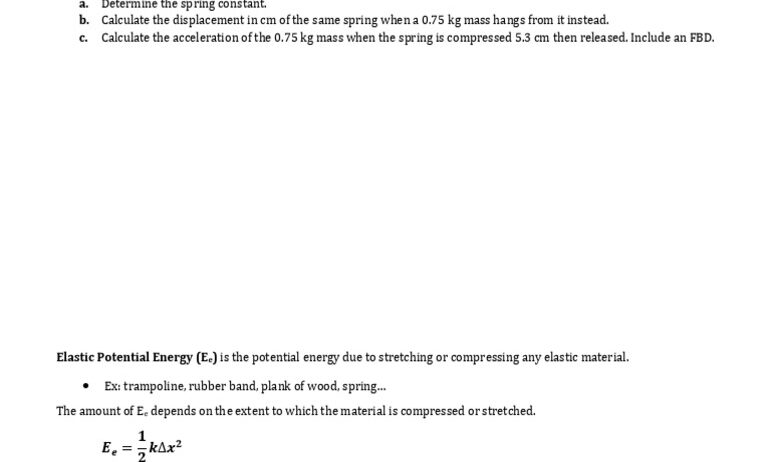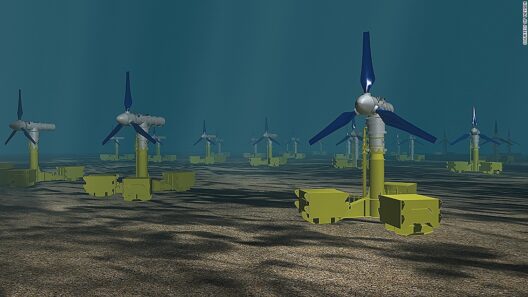When considering the principles of physics, one might whimsically wonder, “Do you have to use the conservation of energy when working with springs?” This question, lighthearted as it may seem, unveils a fascinating intersection of mechanics, energy transfer, and the fundamental laws governing our universe. To navigate this inquiry, it is essential to dissect the concept of energy conservation and its implications on springs, an integral component in various mechanical systems.
The principle of conservation of energy posits that energy cannot be created or destroyed, only transformed from one form to another. This is particularly significant when examining springs, which store and release energy through elastic potential energy. When a spring is compressed or extended, the energy supplied to deform the spring is stored within, waiting to be unleashed when the force is removed. The moment a spring operates, it engages in a constant interplay of kinetic and potential energy, embodying the very essence of the conservation law.
To better understand this, consider the scenario of a simple spring mechanism, such as a slingshot. When you pull back the elastic band of the slingshot, energy is transferred from your muscles into the spring, thereby compressing it. The energy you impart does not vanish; instead, it morphs into elastic potential energy within the spring. Upon releasing the band, this stored energy is converted into kinetic energy, launching the projectile skyward. Herein lies the core challenge: Are there instances when one might neglect the conservation of energy principle while interacting with springs?
The answer is nuanced. Although it might be tempting to overlook energy conservation in elementary applications, neglecting it in complex systems can lead to miscalculations and unforeseen consequences. For instance, engineers designing suspension systems in vehicles must account for energy transfer meticulously. Springs must absorb shocks and dissipate energy effectively, ensuring passenger comfort and structural integrity. Herein arises a critical question: What happens if a spring’s energy dynamics are mismanaged? A failure to adhere to energy conservation could result in catastrophic failures, including accidents.
Moreover, springs are not only found in mechanical applications; they also play vital roles in numerous natural phenomena. For example, when examining the mechanics of earthquakes, one can observe how energy accumulates in the Earth’s crust. When this stored energy reaches a critical threshold, it’s released suddenly, akin to an overstressed spring snapping back. This analogy highlights the universal importance of energy conservation across disparate contexts—from engineered devices to geological events.
To further dissect this matter, it is crucial to consider the types of springs: compression springs, extension springs, and torsion springs. Each type presents a unique challenge and illustrates the application of energy conservation differently. Compression springs store energy when compressed, whereas extension springs do so when stretched. Understanding their specific energy dynamics is paramount when designing systems that rely on their characteristics. An engineer’s failure to apply the concept of energy conservation could result in mechanical inefficiency or even device malfunction.
Another fascinating aspect of springs and energy conservation is their application in renewable energy systems. For instance, springs can be employed in energy-efficient devices that capture and store energy generated from renewable sources. Imagine a wind turbine equipped with springs that store excess kinetic energy when wind speeds are high. This stored energy can then be utilized when the wind dies down. Herein, overlooking the conservation of energy would spell disaster for energy optimization strategies.
The playful nature of the initial question invites one to reflect on whether an intuitive grasp of energy conservation is sufficient for practical applications. While basic experiments with springs may yield satisfactory results without rigorous analytical frameworks, the complexities of real-world applications unequivocally demand a thorough understanding of energy conservation. In sophisticated scenarios, failing to incorporate energy principles could lead to inefficiency and attrition of resources, ultimately undermining the entire system’s functionality.
As we navigate the intricate dance between springs and the conservation of energy, it becomes clear that this law is not merely an academic concept. It is a fundamental mantra guiding engineers, scientists, and environmentalists alike. Acknowledging and applying the conservation of energy is essential in enhancing design efficacy and fostering sustainable practices across various sectors. In every application, from mechanical engineering to ecological conservation, the tenets of energy conservation have vast implications.
In conclusion, the inquiry into whether the conservation of energy must be utilized when working with springs is grounded in a profound understanding of physics. While the whimsical notion of ignoring this principle may seem appealing, the realities of mechanical functions and energy transfer reveal its undeniable significance. Advances in technology and engineering hinge predominantly on this core principle. For the sake of innovation, safety, and sustainability, one must always consider the interplay of energy within springs and beyond. As the world continues to evolve, embracing these fundamental laws equips society to tackle the challenges of the future with integrity and wisdom.






